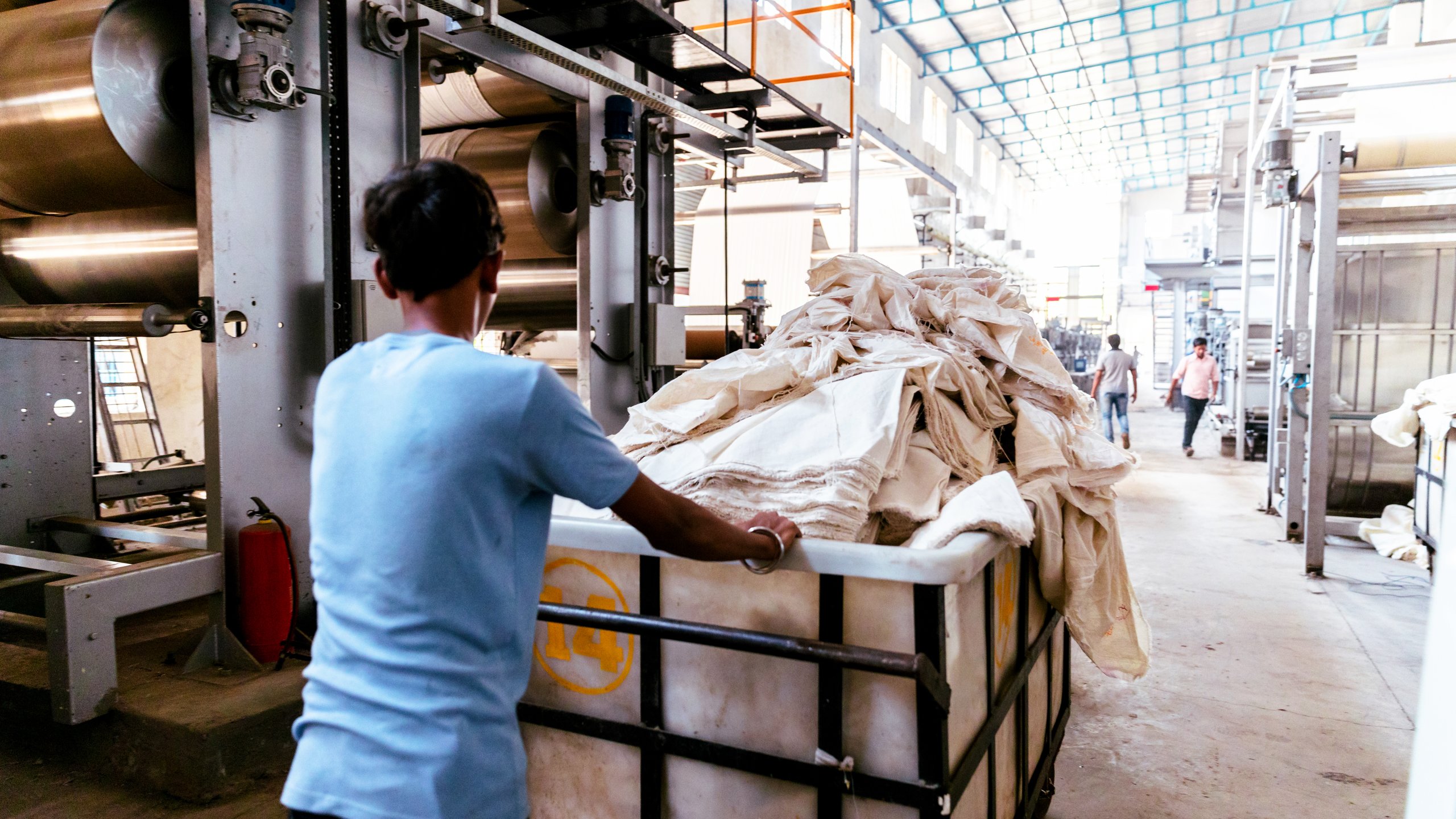Accelerating innovation across the fashion industry
Independent evaluation of Fashion for Good
14 June 2021

Fashion for Good seeks to transform the fashion industry from a ‘take-make-waste’ pattern to a circular Good Fashion approach that is restorative, regenerative and sustainable by design.
The two objectives of Fashion for Good are to
1) nurture, accelerate and scale innovations along the fashion supply chain, and
2) drive conversations and collaborations towards wider behavioural change, by acting as a convenor.
The first objective is pursued through an innovation platform that consists of: (a) an Accelerator programme that nurtures ‘start-up’ innovators; (b) a Scaling programme that supports innovators that have passed ‘proof of concept’ through access to expertise, customers and capital; (c) foundational long-term projects in plastics, transparency and traceability inter alia; and (d) a Good Fashion Fund that provides impact investing to bring innovations to widespread adoption. Goals (c) and (d) started in 2020 and were not included in this evaluation.
The second objective is achieved through: (a) the Fashion for Good Experience (or Experience Centre), an innovative, interactive, technology-driven museum launched in 2018 in the centre of Amsterdam. It aims to raise awareness of the need and vision for sustainability in fashion. It has recently introduced virtual tours and experiences in response to the Covid-19 global pandemic; (b) the Circular Apparel Community, a co-working space bringing together a community of organisations interested in supporting sustainable fashion and circular business models. More than 90 permanent people work in FFG’s building alongside more than 150 community members; and (c) the Good Fashion Guide, which provides circular apparel toolkits and guidelines to disseminate information and facilitate learning for the industry and public.
Facts:
Partner: Fashion for Good (FFG)
Investment: EUR 24.79 million
Duration: 2017 – ongoing
Geographic region: Global
Results
FFG is well designed, developed, adapted and refined to address most of the critical needs and issues within its scope.
- FFG’s design and implementation build on past lessons and help to advance the broader strategy of Laudes Foundation. Some minor limitations are evident, such as insufficient emphasis on; inequity and inequality in the fashion industry; and support for circular business models within the Innovation Platform.
FFG does well at identifying, attracting and strengthening innovators with transformative potential. This is FFG’s standout strength over the first three years of operation.
- While not all innovations are disruptive, they all target relevant fashion industry challenges. Innovators are well supported to develop and build their technologies, organisational capacities and networks. Most of the innovators are based in Europe and North America, but FFG has started to target more talent in the Global South, especially in South Asia.
- FFG has had reasonably good success at supporting innovators’ engagement with brands and retailer partners to test technologies with potential to change ‘business as usual’. Sixty-three percent of innovators entered the programme with at least a Minimum Viable Product (MVP); a base requirement for engagement with most partners. Among all innovators, 60 percent did not make it to pilot stage, while 31 percent are exploring possibilities with a partner.
- Innovators value tailored support that helps them develop ideas and business models and substantially strengthen their capacities and networks. Brands and retailer partners have also strengthened their own capabilities to work more effectively with innovators and collaborate to solve common challenges.
FFG had some success in supporting circular business models with the potential to disrupt ‘business as usual’.
- One in six innovations that have made it to the Scaling Programme offers a disruptive, new circular business model solution. However, it is early days for an industry that has been stuck in its ways for more than a century. The 2020 pandemic may catalyse greater interest in circularity as a more resilient and sustainable business model alternative. This is a promising area for growth.
Industry narrative change is not yet at a tipping point, but pressure is building. Influencing changes in the wider industry remains a huge challenge.
- Given the fashion industry’s entrenched way of operating, it is unrealistic to expect FFG to have influenced a major shift in the industry’s narrative at this early stage. FFG has, however, influenced the thinking, attitudes and discourse of participating frontrunner brands, retailers and manufacturers around circular business models.
After just three and a half years of FFG, it is too soon to see the emergence of system shifts through the uptake and adoption of new models and practices.
- Taking innovation from the periphery to scale across the fashion industry takes time, even with supportive brands, retailers and manufacturers on board. Some promising signs are starting to emerge in the form of successful pilots, particularly in the Scaling Programme.
What did we learn?
Laudes Foundation
- Accelerating innovation and new business models across an industry with entrenched ways of working demands a medium to long-term investment horizon and outlook. Tipping points are unlikely to be reached during the initial years and patient capital is a prerequisite.
- Early involvement of big-name brands and retailers as partners gives credibility and distributed ownership to an industry innovation platform.
- Getting motivated, committed and industry savvy leadership in place is critical to early success.
For Partners & Others
- Engaging with innovators requires brands, retailers and manufacturing partners to invest in research and development and assign dedicated staff.
- Onboarding partners to an innovation platform helps prepare them to fully engage with and adopt innovations.
- Accelerating innovation requires commitment to continuous learning. FFG has been successful because it uses data and insights to be agile and adapts to change quickly.
- Rigorous screening during the selection process ensures that only innovators with the greatest potential are put in front of brands, retailers and manufacturing partners. This also boosts partner engagement and support.
